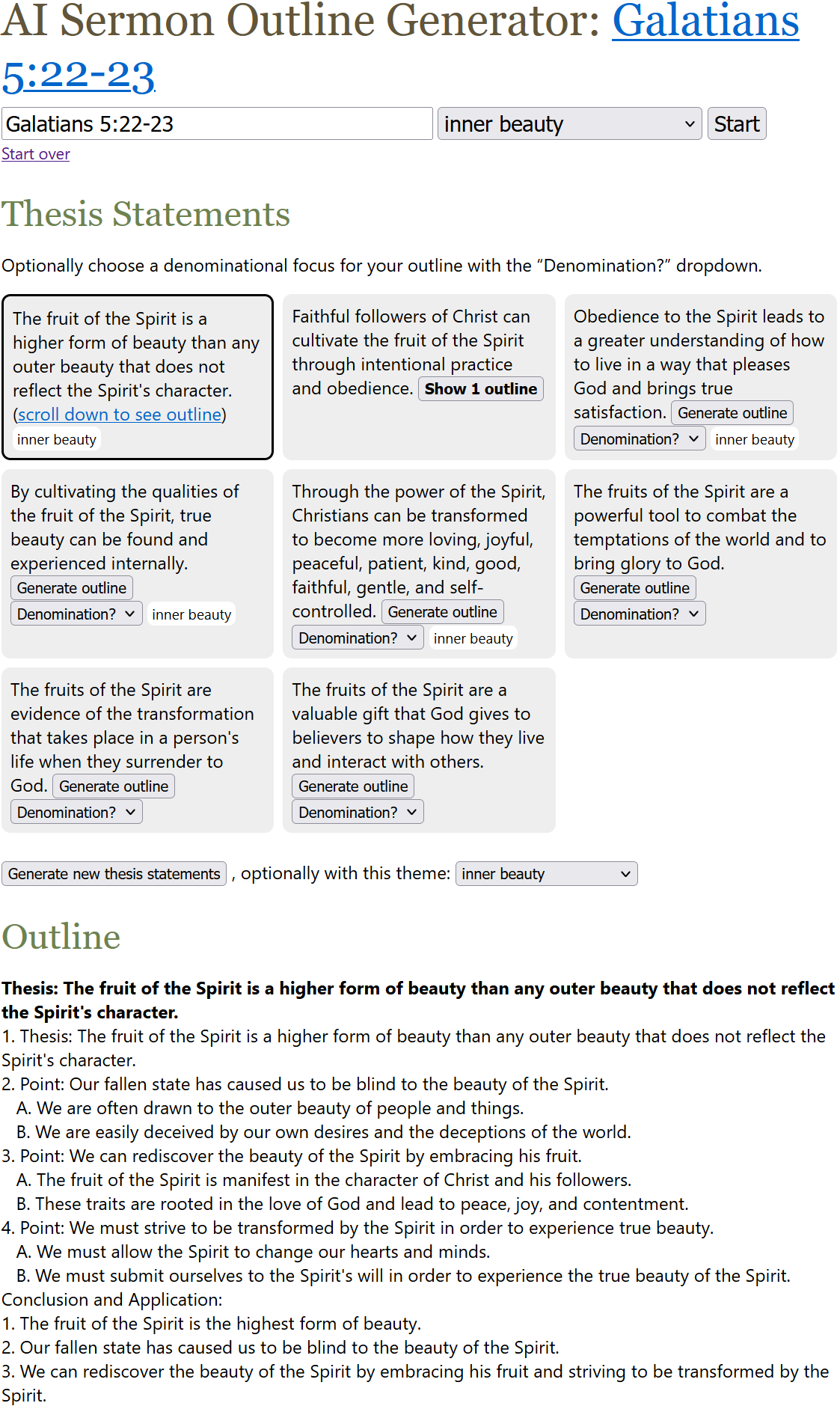First, the UI for the sermon outline generator now lets you pick an overall theme for the sermon’s thesis statement, leading to less-generic statements. It’ll now give you some decently high-quality thesis statements, helping you brainstorm quickly. You can choose from about 160 themes (such as anxiety, discernment, healing, and forgiveness) drawn from popular topics on this site.
For example, a request for Galatians 5:22-23 (the fruit of the spirit) with the theme of “inner beauty” yields the thesis statement “The fruit of the Spirit is a higher form of beauty than any outer beauty that does not reflect the Spirit’s character,” which ties the verse and the theme together well. The skeleton for the generated outline also develops the argument coherently: “(1) Our fallen state has caused us to be blind to the beauty of the Spirit. (2) We can rediscover the beauty of the Spirit by embracing his fruit. (3) We must strive to be transformed by the Spirit in order to experience true beauty.”
Second, you can now choose a denominational focus for your outline (Anglican, Baptist, Catholic, Lutheran, Mennonite, Methodist, Orthodox, Pentecostal, or Presbyterian). Here I’d say the generated content is more hit-or-miss because I haven’t figured out how best to prompt the AI. Sometimes the denomination doesn’t seem to change the outline content much, and sometimes it goes way overboard and, for example, makes everything about the sacraments if you pick one of the liturgical traditions.
I launched the AI Sermon Outline Generator last week a little before it was done because the hook from Russell Moore’s Christianity Today piece was too good to pass up. It now has all the UI features I planned for launch. A future post will go into the technology behind it.
